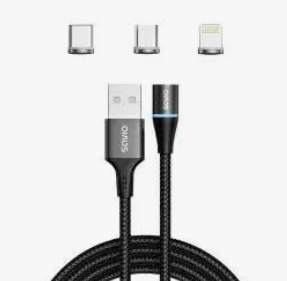Mudita has done great work championing and promoting awareness of health, particularly phone-work-life balance and eye health, and Pure was specifically designed to emit minimal radiation. Kompakt is not a very low radiation phone and Mudita is yet to tell us whether Kompakt will be able to be used for ethernet based internet calling, despite my October 2024 and 3 February posts Blog: The Benefits of Choosing a Mindful Phone Like Mudita Kompakt - #3 by neatsolutions Blog: The Benefits of Choosing a Mindful Phone Like Mudita Kompakt - #12 by neatsolutions
Similar interest is evident in other forum threads, e.g. in the Cellular/wifi transmit power control for Kompakt? thread with @jordan and @calebsmum and in the EMF levels on Kompakt thread with @roberto and @galtions showing clear interest in lowering wifi and phone EMF exposure. @msnell89 wanted to use ethernet cabled internet as internet source for phone in this thread in April 2024. @egvde and @shak had similar queries. In May 2024 @Grzegorz_Szmidt said he would [quote=“Grzegorz_Szmidt, post:12, topic:4765”] ensure that your input is carefully shared with our development team for their consideration in future projects.[/quote] So Mudita’s development team have known there’s interest in this for at least 10 months. Given Mudita’s history with Pure, we can be confident there’s plenty more interest.
It can be very easy to forget about the massive increase in microwave and radio frequency radiation we are exposed to as it has no odour and cannot be seen, but the health impacts are real. Independent scientists have documented negative health effects for over 60 years and those that say it’s not harmful to health usually have vested interests in the tech industry. Microwave frequency radiation exposure effects are cumulative. This is a key problem for the long term health of any mobile phone user.
Thoughtful technology exists to effectively minimise radiation exposures from android phones by substituting ethernet cable internet access for microwave radiation based signals - in fact turning that phone function off. It creates a very low radiation phone. I’ve used it with my current android phone to call overseas and locally via Telegram using my home ethernet cabled internet. @anon11367638 Blog: The Benefits of Choosing a Mindful Phone Like Mudita Kompakt - #4 by RasVoja said most android phones allow this function, but I have found this cannot be relied upon. Given some android phones do allow this function at least via apps (e.g. Telegram) it would seem to rely on software set up. This is why I am still hopeful Mudita can do it with Kompakt.
Ethernet cabled calling and internet options are best practice solutions for reducing EMF/microwave frequency radiation from mobile phones, just as e-ink is best practice for eye health with screens. It is the lowest radiation mobile phone calling option available – better than Pure could offer. Ethernet based calls are made with the phone switched to aeroplane mode, meaning both mobile data and mobile phone functions are turned off, and instead a home or work ethernet cabled internet connection provides internet connectivity via a cable adapter to the phone’s USB C port. This allows users to make calls and access phone features that otherwise rely on mobile phone signals or mobile data both of which mean exposure to microwave frequency radiation (also known as EMF, EMR, wifi, bluetooth and cell phone radiation).
Ethernet cabled internet is used in parts of the business world because it is more private and secure than wifi internet. Mudita is interested in phone privacy.
Wifi (i.e. internet) calling is being offered on Kompakt – very useful when mobile phone signal is poor. So clearly internet can be used for calls. While hard-wired internet is not as common as wifi, it is the healthier, more secure and private choice. Given Mudita clearly isn’t trying to make a common phone, will wired ethernet (internet) calling equivalent to wifi calling, but with phone on aeroplane mode, be possible on Kompakt?
It would be good to know if there are issues in the way of Mudita providing ethernet (wired internet) calls on Kompakt. Does anyone have more in-depth technical information about all that’s required for well-functioning ethernet cabled internet calling with mobile phones switched to aeroplane mode? By this I’m meaning both wired in ethernet (internet) calls equivalent to wifi calling and also calls via sideloaded apps (such as Telegram, Signal or Session).
Mudita has very actively promoted e-ink benefits, phone privacy and mindfulness, consequently awareness and interest have grown. It would be consistent with Mudita’s mission to take the opportunity for further supporting users’ well-being and privacy by adopting and actively promoting ethernet cabled calling options for Kompakt.
Preformatted text

